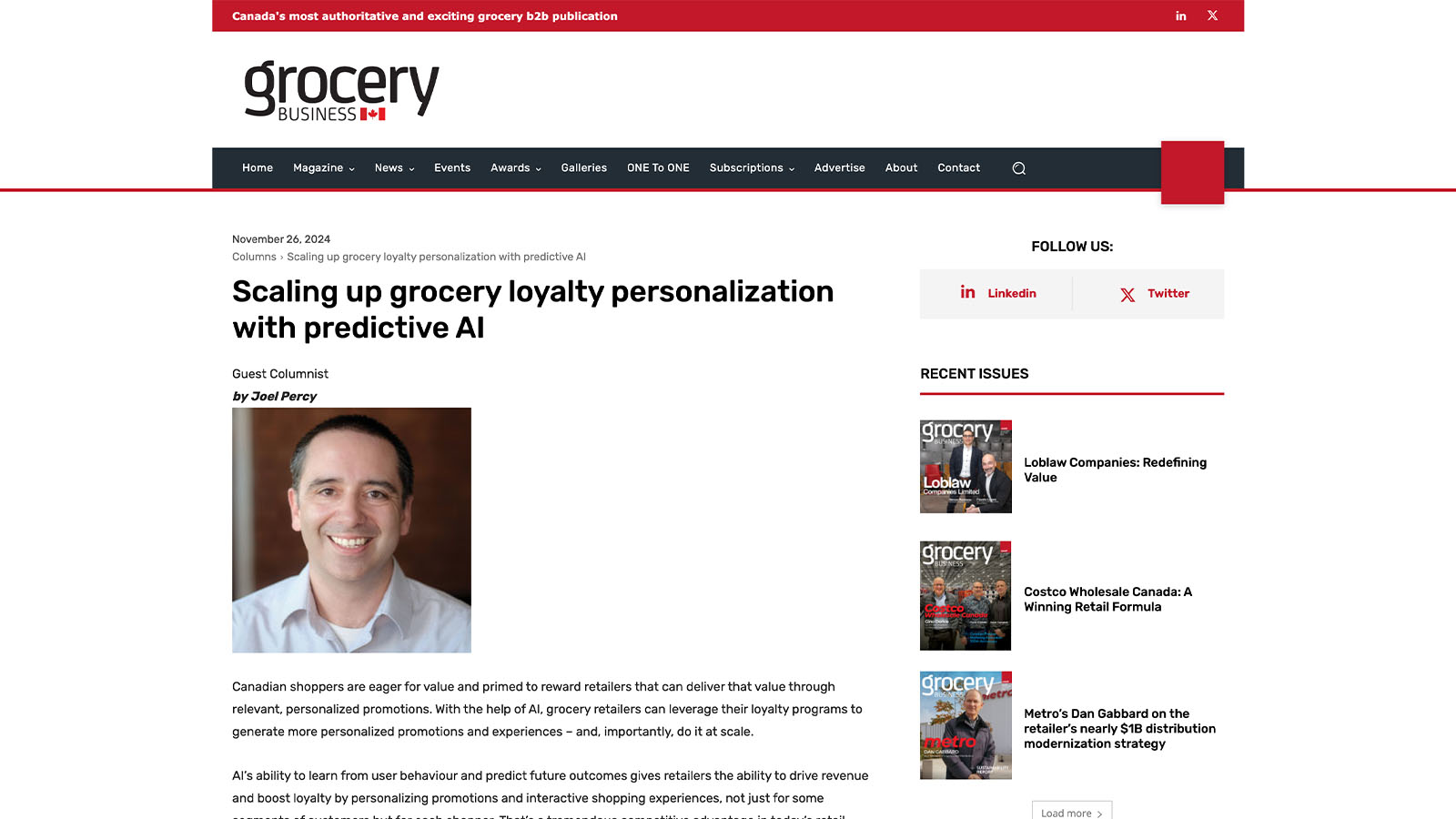4 min read
The Grocery Loyalty Landscape in Canada and the United States [A Survey Snapshot]
Discover the current grocery loyalty landscape in Canada and the USA. Download the North American grocery loyalty snapshot or read the full report.
Get the latest insights, research and news delivered straight to your inbox.
Plus, enter to win the 2nd edition of Omnichannel Retail by Tim Mason & Sarah Jarvis!
No spam. We promise. 💜
Featured Case Study:
See how Eagle Eye helped Giant Eagle relaunch myPerks, delivering 25M+ personalized offers monthly and boosting loyalty program ROI.
Contact us to find out how we can enable your teams on our platform.

2 min read
 Eagle Eye
on
12 June, 2023
Eagle Eye
on
12 June, 2023
![The Grocery Loyalty Landscape in Asia Pacific [A Survey Snapshot]](https://eagleeye.com/hubfs/images/featured/eagle-eye-asia-pacific-loyalty-snapshot.jpg)
Asia-Pacific’s grocery market boasts many unique factors that set it apart from other regions worldwide. Within this distinctive landscape, the region’s grocery retailers should leverage new opportunities to improve customer engagement and retention strategies and drive home more loyalty.
Our recent global consumer loyalty survey, Grocery’s Great Loyalty Opportunity, examined how consumers worldwide and within the APAC region (Australia, Malaysia, New Zealand, Singapore, and Thailand) feel about rewards programmes, what drives their purchasing preferences and what makes them loyal to retailers, including grocers.
Let's explore some of the region-specific findings in our Asia Pacific Grocery Loyalty Snapshot.
Our research revealed a region that has shown remarkable resilience amidst the global cost of living crisis, with a lower inflation rate than the global average. It’s also a region primed for growth in the grocery sector. According to McKinsey, sales are projected to increase by 6-7% through 2025, particularly in Southeast Asia, where $200 billion is spent annually on groceries.
As competition intensifies, it is becoming imperative for retailers to devise strategic approaches and adapt their loyalty programs to effectively attract and retain customers in this thriving market.
Shopper attitudes and behaviors in the APAC region provide the direction for that adaptation. Like shoppers in other global areas, consumers here have responded to rising prices by reducing travel expenditures while embracing online shopping and taking greater advantage of discounts and specials. Notably, finding savings online is more prevalent among APAC consumers, with 57% preferring this method compared to 42% of consumers in the UK/Ireland and 39% in North America.
Consumers surveyed in the region also demonstrate a reduced desire to cut back on dining out or ordering takeout to save money, opting instead for alternative methods of cost savings.
This includes actively seeking out items that offer discounts and promotions compared to consumers in other regions. This emphasis on value extends to their perception of loyalty programs; 58% of APAC consumers stated that they are using existing programs more frequently to save money, and 37% have joined new loyalty programs with the same objective.
And more than half of the regional consumers surveyed prioritize loyalty programs that provide the most value and highest discounts (54%). These shifting attitudes present a prime opportunity for retailers and grocers to enhance their loyalty programs, delivering against customers’ needs for value whilst improving the overarching customer experience by better personalizing the offering.
Perhaps the most significant opportunity for grocery retailers in APAC is tapping into shoppers’ appetite for games and challenges. Throughout the region, where gaming is highly culturally relevant, gamifying the shopping experience is a natural and direct way for retailers to enhance their loyalty initiatives.
A significant 74% of APAC consumers are willing to participate in games, contests, or challenges through loyalty programs or apps. However, only 60% of the loyalty programs they belong to currently offer such gamification elements. This discrepancy highlights an unrealized potential for retailers to expand their gamification initiatives and bolster engagement within their loyalty programs.
For retailers, especially grocery retailers, the APAC region presents significant opportunities to activate and engage shoppers through sophisticated loyalty strategies. With unique saving and shopping habits, shifting attitudes, and a readiness to participate in loyalty programs, APAC consumers are primed for a grocery loyalty experience that offers value, personalization, and interactivity.
By incorporating gamification elements, personalized offers, and real-time promotions, retailers can forge stronger connections with consumers, increase customer retention, and foster brand loyalty.
In fact, some grocers in the region are actively expanding their loyalty programs to include these capabilities and reap the benefits, like Singapore’s grocery retailer FairPrice and its upcoming improvements to the Linkpoints program. (You can learn more about our upcoming work with FairPrice in this recent announcement).
Grocery retailers that understand and adapt to the distinct loyalty landscape of APAC will be well-positioned to capitalize on the region's growing market, driving revenue growth and establishing themselves as leaders in customer engagement and satisfaction.
Download our Asia Pacific grocery loyalty snapshot or take a deep dive into the global loyalty landscape in our comprehensive grocery loyalty research report here.
Get the latest insights, research, and news delivered straight to your inbox.
Plus, enter to win the 2nd edition of Omnichannel Retail by Tim Mason & Sarah Jarvis!
No spam. We promise. 💜
![The Grocery Loyalty Landscape in Canada and the United States [A Survey Snapshot]](https://eagleeye.com/hubfs/images/featured/north-america-grocery-loyalty-snapshot.jpg)
4 min read
Discover the current grocery loyalty landscape in Canada and the USA. Download the North American grocery loyalty snapshot or read the full report.

1 min read
Joel Percy shares how predictive AI is transforming loyalty in grocery, enabling retailers to scale personalization and improve customer experiences.

5 min read
A new study shows sustainability is key to North American consumers' purchases and loyalty, offering retailers a chance to reach eco-conscious shoppers.